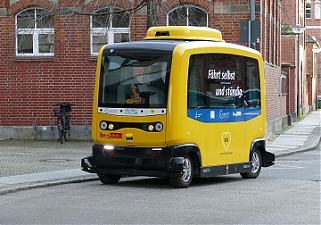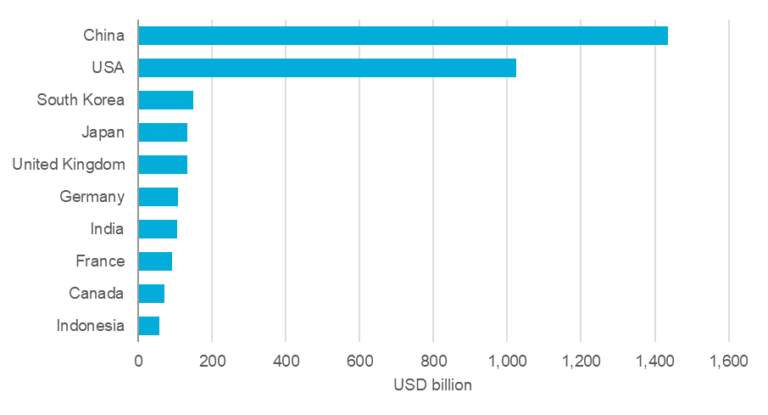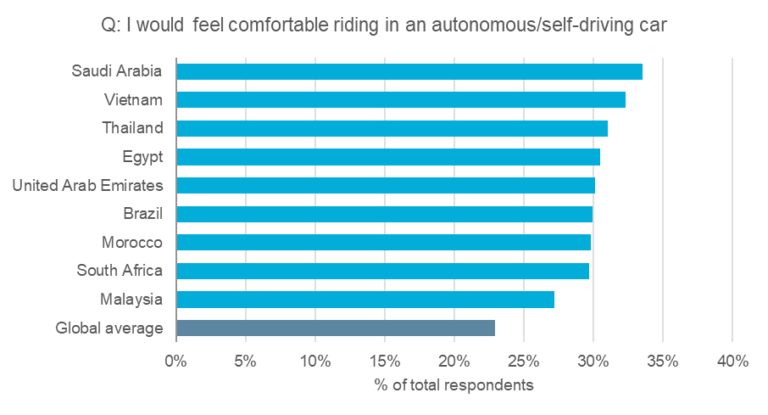Direct Speech, EU – Baltic States, Innovations, Technology, Transport
International Internet Magazine. Baltic States news & analytics
Sunday, 30.11.2025, 13:21
Euromonitor International: Coronavirus Increases Demand for Autonomous Vehicles
 Print version
Print versionE-commerce boom drives demand for autonomous vehicles in logistics and delivery
 |
|---|
Since the outbreak of COVID-19, many consumers have switched to e-commerce as a result of rising health concerns and lockdown measures. For example, internet retail sales in China and the US, the two largest e-commerce markets globally, are predicted to grow by 23% and 18% respectively in real terms in 2020. Changing consumer preferences are also expected to drive long-term changes in the retail environment. According to the Euromonitor International’s Voice of the Industry COVID-19 survey conducted in April 2020, 54% of respondents indicated they plan to increase online spending permanently, while 28% plan to permanently reduce visits to physical stores.

Source: Euromonitor International from national statistics, trade sources
These changes will drive demand for logistics and delivery services and companies will have to quickly increase their operating capacity to meet demand. Autonomous vehicles could be an attractive option, as they help to increase delivery network capacity, reduce costs and comply with social distancing measures.
During the first quarter of 2020, many logistics companies started to use autonomous vehicles in their operations in limited areas. For example, autonomous delivery company Nuro was granted permission to operate its vans on public roads in California, while GM Cruise started autonomous delivery of food products from San Francisco-Marin Food Bank to senior citizens in the San Francisco area. Moreover, autonomous vehicles have started to become an attractive and safe alternative for the healthcare industry. For instance, the Mayo Clinic used autonomous cars to deliver COVID-19 tests in Florida.
Autonomous vehicles become more attractive for “the public” and governments
Due to rising health concerns and changing commuting patterns, demand amongst private consumers is also increasing for personal cars. According to Euromonitor’s Voice of the Industry survey, 13% of respondents indicated they plan to permanently increase usage of cars for their commuting.
Moreover, COVID-19 has accelerated interest in getting a driving licence among the younger generation and city-dwellers. For example, automotive digital marketing company Hedges & Company projects total number of licensed drivers in the USA will increase by three million in 2020 to total of 230 million. Analysis of Google Analytics data also shows increased interest in driving tests in the USA, UK, Germany, Japan and other markets in the second half of 2020, indicating potentially growing demand for cars. In many cases new drivers are city-dwellers, and autonomous vehicles could be an attractive option for short-distance commuting. The autonomous cars eliminate the need to search for parking space and can be a more convenient option during the rush hours.
There is rising interest in autonomous vehicles on a global scale, with 23% of respondents in Euromonitor’s Mobility survey conducted in February 2020 indicating they would feel comfortable driving an autonomous car. Also, 14% indicated they would not own a personal vehicle if they had access to an autonomous one.
Countries Where are Most Comfortable Riding Autonomous Vehicle 2020

Source: Euromonitor International Mobility Survey 2020
Governments are also keen to accelerate autonomous vehicle development, as this is perceived as one of the growth engines that could spur economic development after COVID-19. For example, the city of Turin, Italy aims to attract tech start-ups to the city. The government of South Korea also plans to accelerate autonomous vehicle development and set up all relevant infrastructure by 2024.
Struggling automotive companies may find it difficult to meet demand
Despite increasing demand for autonomous vehicles, financial challenges in the automotive industry might make it difficult to meet this demand, which could delay the launch of fully autonomous cars.
During the first half of 2020, the top 10 car manufacturers reported a combined loss of USD6.1 billion. Financial and liquidity problems are forcing companies to cut their research and development spending, with autonomous vehicle programmes being amongst the first at risk. For example, Ford indicated it will postpone the development of its autonomous programme for a year; BMW and Mercedes-Benz have placed their joint autonomous programme on hold, while Waymo (the self-driving technology unit of Alphabet) has temporarily suspended its road-testing.
Combined Profits of Top 10 Car Companies Q4 2019 Q4 – Q2 2020

Source: Euromonitor International from company reports
Road testing and infrastructure development are perceived as the core pillars of the successful launch of autonomous vehicles. As a result, the financial problems of the car industry are likely to delay the launch of fully autonomous vehicles for another 2-3 years, until the year 2025 instead of 2022-2023 previously forecasted. However, booming e-commerce sales and the accordant surge in investment and greater involvement from logistics companies could help to accelerate the process and speed up delivery of autonomous commercial vehicles. Investment inflows from logistics companies could help automotive manufacturers to improve cash flows and unlock more resources to be invested in future technologies.
Access further insights in our report “The New Mobility Ecosystem”.
- 26.08.2021 LLC Dizozols Investments finalizes investment attraction deal with Crowdestor with record-high profits
- 30.12.2020 Накануне 25-летия Балтийский курс/The Baltic Course уходит с рынка деловых СМИ
- 30.12.2020 On the verge of its 25th anniversary, The Baltic Course leaves business media market
- 30.12.2020 Hotels showing strong interest in providing self-isolation service
- 30.12.2020 EU to buy additional 100 mln doses of coronavirus vaccine
- 30.12.2020 ЕС закупит 100 млн. дополнительных доз вакцины Biontech и Pfizer
- 29.12.2020 В Латвии вводят комендантский час, ЧС продлена до 7 февраля
- 29.12.2020 Latvia to impose curfew, state of emergency to be extended until February 7
- 29.12.2020 Linde Gas открывает завод в Кедайняйской СЭЗ
- 29.12.2020 В Риге можно изолироваться в трех гостиницах








 «The Baltic Course» Is Sold and Stays in Business!
«The Baltic Course» Is Sold and Stays in Business!

